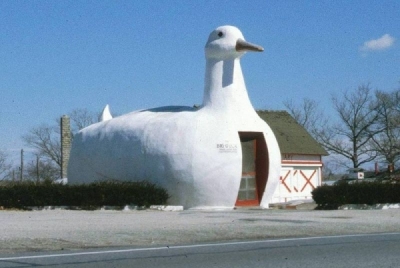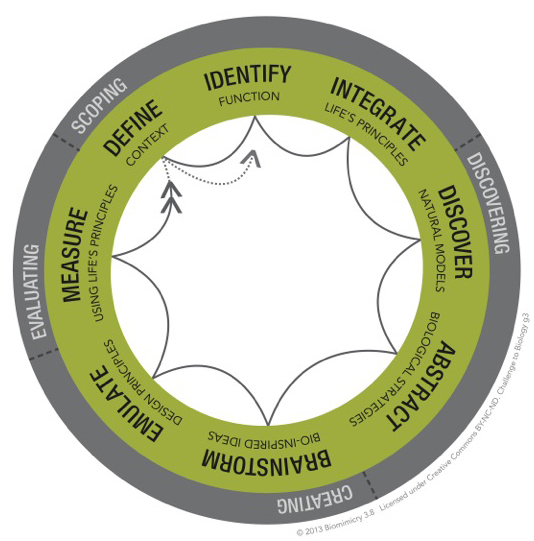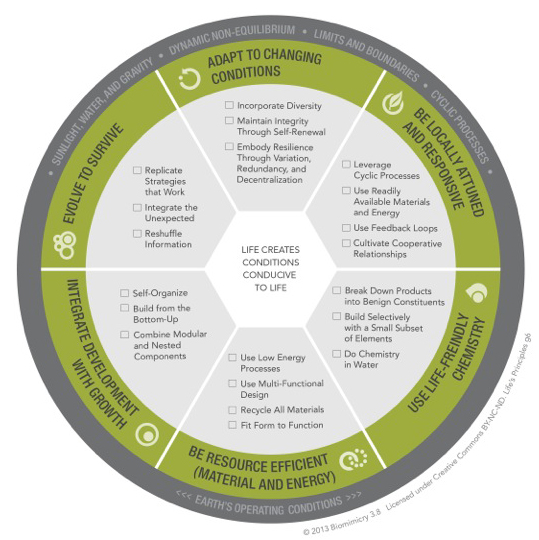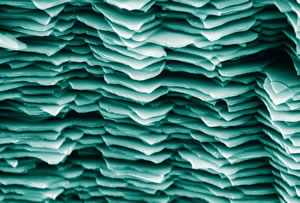You are here
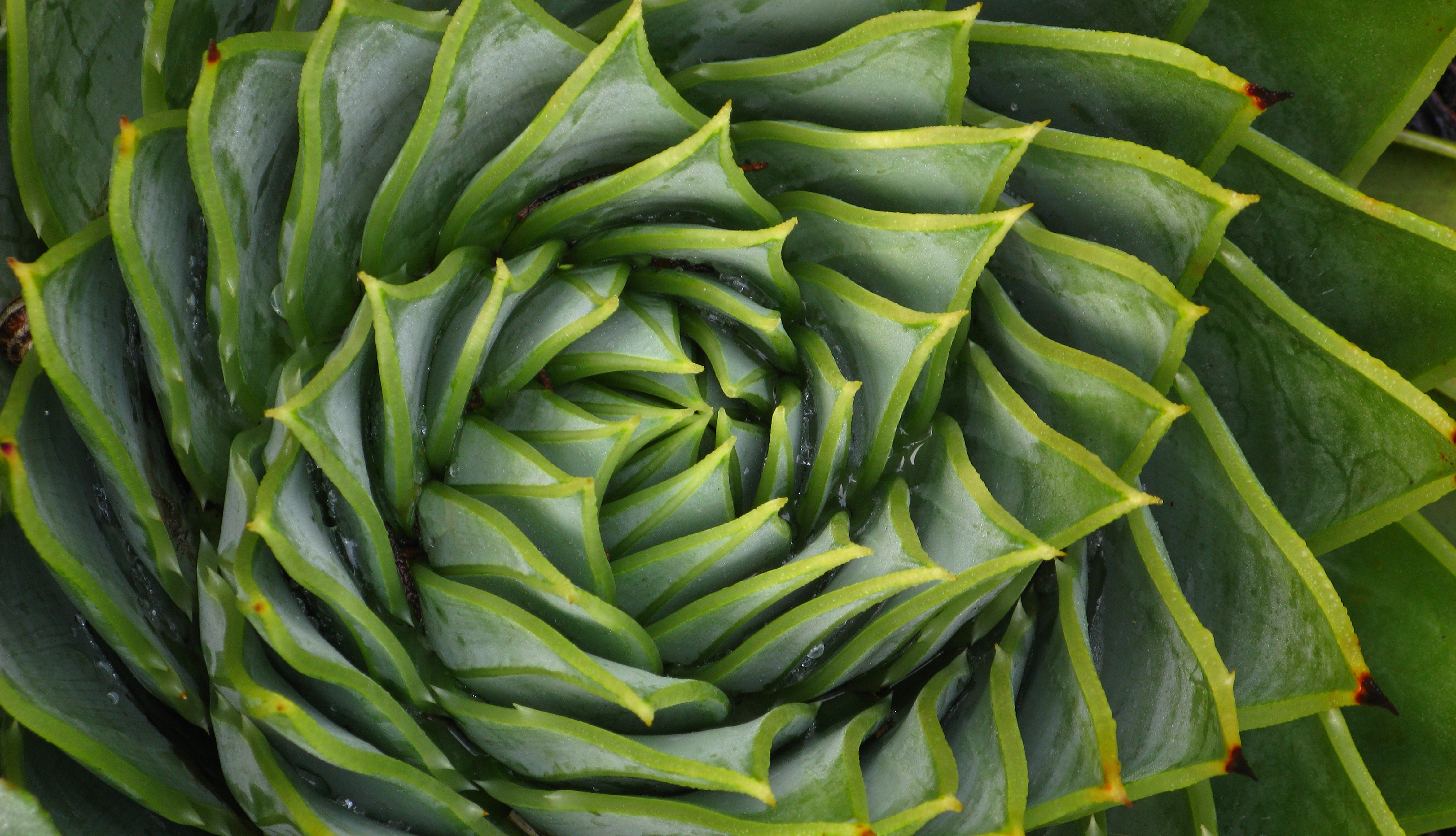
Biomimicry takes inspiration from nature to find better ways of making or doing things. Biomimicry can work at any scale, from self-cleaning paint that mimics the micro-structure of a lotus flower, to a high-rise office tower that mimics a termite mound's ventilation structure to passively keep itself cool.
In addition to form, biomimicry can be applied to both processes and systems. For example, a biomimetic process might involve growing an item rather than cutting it from a block of material and a biomimetic system might involve wireless sensors coordinating activities the way swarming bees do.
What Biomimicry Is and Is Not

Velcro imitates burr hooks on one side, fur on the other (images from Wikimedia Commons1,2,3)
Biomimicry, when done well, is not slavish imitation of nature. Instead, it is inspiration--discovering the principles which nature uses. For instance, when airplanes were first being invented, the best designs were not ornithopters (which precisely copy birds by having flapping wings), but the fixed-wing craft that used the physics of the airfoil (based on the cross-sectional shape of bird wings) to balance lift and drag.
Biomimicry, when done well, is also not merely about form: it is about function. A building shaped like a duck may be entertaining, but it is not biomimetic in the way described here, unless it also derives some useful function from the shape (such as being more energy efficient, or waterproof, etc.) The Velcro described above does not look like a burr or like a dog, yet it perfectly recreates their physics to provide strong adhesion.
Sources of Bio-Inspiration
Design advice:
- AskNature.org (a searchable online encyclopedia of biomimicry)
- Biomimicry 3.8 (for education, news, networking, and more)
Books:
- Biomimicry, by Janine Benyus (the book that started the modern biomimicry movement)
- The Way Nature Works, edited by Robin Rees (one of many nature picture-books that are good for finding ideas)
- Cats' Paws and Catapults, by Steven Vogel (an excellent source of mechanical engineering-related biomimicry)
- On Growth and Form, by D'arcy Thompson (both a giant tome of scientific theory and a good sourcebook of images)
- Out of Control, by Kevin Kelly (an inspiring book of systems design theory)
- Life in Moving Fluids, by Steven Vogel (a biomimetic fluid dynamics textbook)
- Structural Biomaterials, by Julian Vincent (a materials science analysis of natural materials)
- Biomimicry for Optimization, Control and Automation, by Kevin Passino (a computer science textbook on genetic algorithms, neural networks, etc.)
Doing Biomimicry Yourself
Dive Deeper
Doing Biomimicry: Finding Mentors in Nature
The process of doing biomimetic design by using specific plants, animals, or other organisms as models and mentors.Doing Biomimicry: Natural Principles
Biomimicry can be done without looking to specific organisms, but rather using principles of nature that others have identified over the years.Doing Biomimicry: Mechanical Principles
Steven Vogel's book Cats' Paws and Catapults contains an excellent list of nature's design principles for mechanical engineers4. It is reproduced here, with some editing for brevity and links.Links and References
- Downloadable curriculum resources from the Biomimicry Institute.
- If you're in K-12 education, check out the Biomimicry Group's online course to help bring biomimicry into the classroom.

